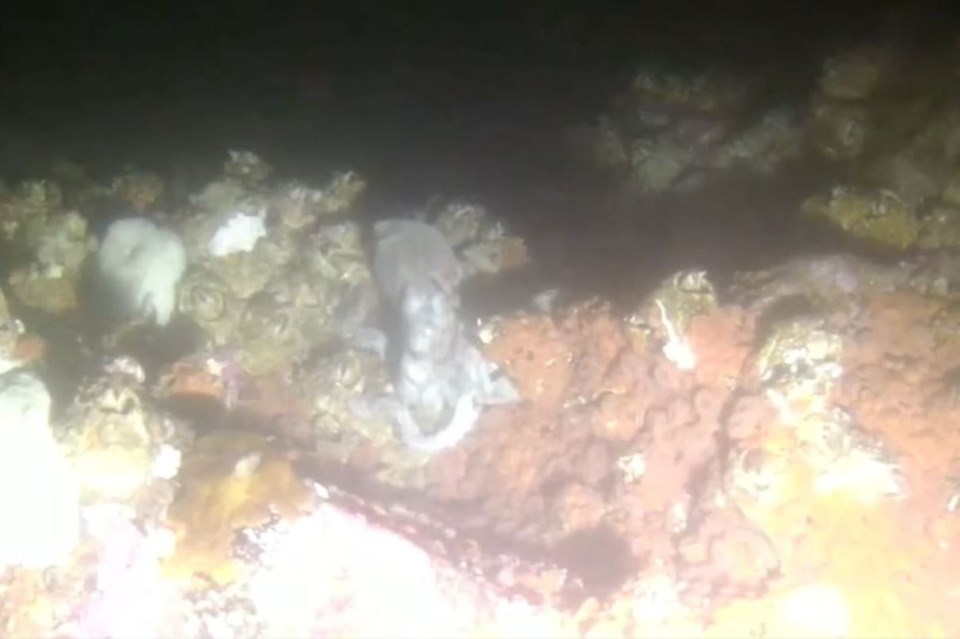Even with eight legs, it was difficult to hang on during this week's bomb cyclone in British Columbia, with a remote camera capturing an octopus battling currents whipped up by the hurricane-force winds.
The giant Pacific octopus was spotted by an Ocean Networks Canada video camera on the sea floor off Vancouver Island's west coast, clinging to rocks and coral buffeted by the currents early Wednesday.
The video shows the octopus using its tentacles to hang on, while its mantle — the sac above its head — is rippled by the fast-moving water.
Story continues below video
Kate Moran, president of the organization based at the University of Victoria, says the shallow waters off Bamfield where the octopus was spotted have current speeds that typically increase to about 60 centimetres a second over 12 hours.
But she says that during the bomb cyclone, the currents were rapidly changing directions and cycling between speeds of 15 and 200 centimetres per second.
At the same time, waves in the area reached 10 metres, creating immense pressure and a "dramatic environment" for the octopus.
"I just thought it should crawl back in, you know, it came out of that little crevice," she said.
"Some of my staff think, well, maybe this was so unusual, maybe (the octopus) wanted to see what it felt like."
Octopuses are smart and "incredibly agile," she said, adding the species has built up resilience over 400 million years of evolution.
The video underscores the importance of underwater cameras to help researchers examine the effects of such weather events on the ocean environment, she added.
Moran said it might be the first time her organization has documented the underwater effects of a bomb cyclone, describing it as "quite unique."
A bomb cyclone is triggered by a rapid drop in atmospheric pressure, and the system brought winds as high as 170 km/h to B.C.'s coast.
Ocean Networks said the video of the octopus was captured shortly after 2 a.m. on Wednesday.
This report by The Canadian Press was first published Nov. 22, 2024.



